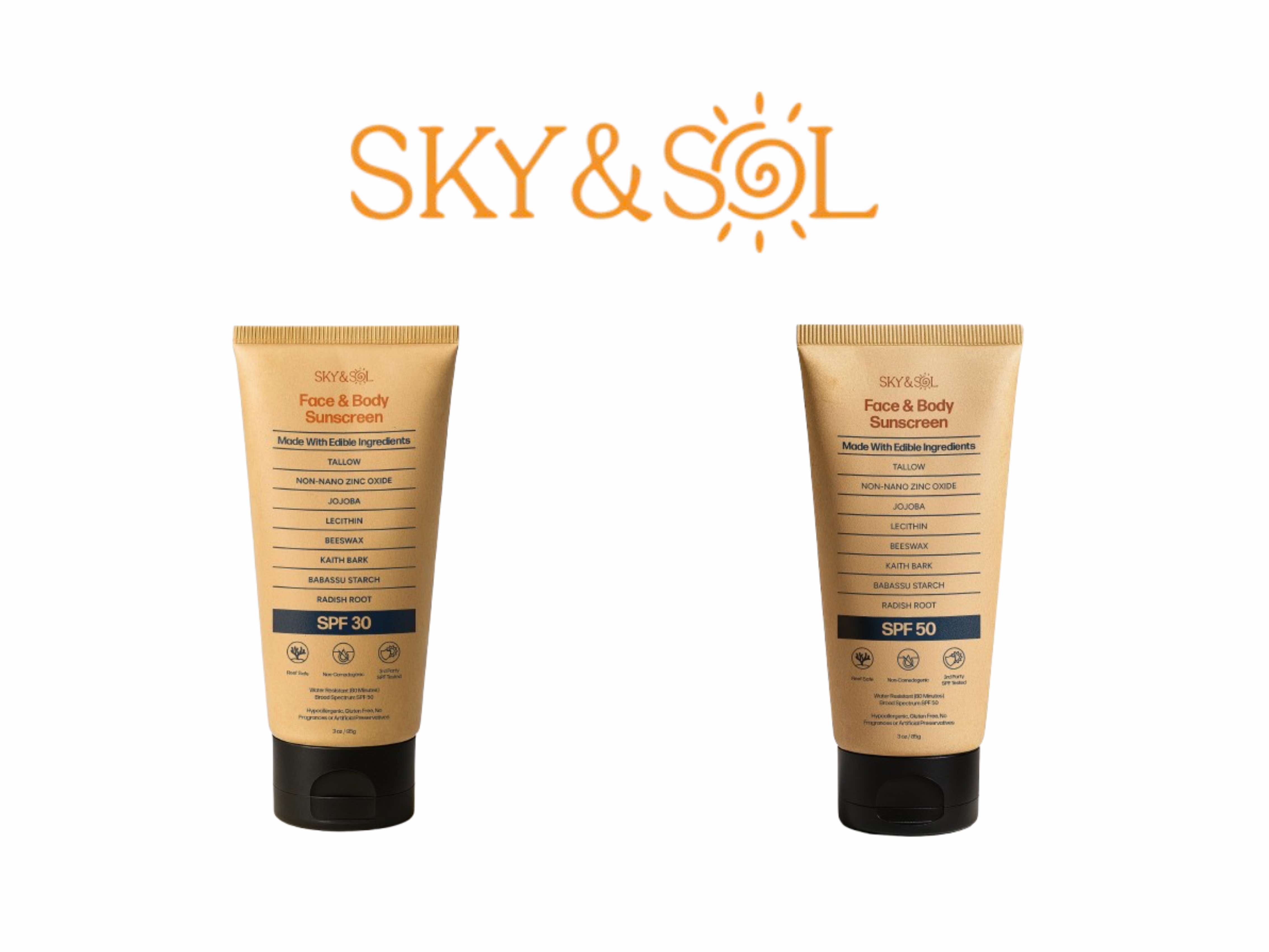
For the longest time, I was either making my own sunscreen at home or just avoiding the sun during those peak UV hours. I hate the idea of slathering on chemical-heavy SPF products that didn’t align with the lifestyle I’ve been building around clean beauty and wellness.
But recently, I came across a brand that completely shifted the game for me: Sky and Sol sunscreen. This is the first time I’ve actually felt excited and comfortable about a sunscreen. Today, I’m sharing my honest Sky and Sol sunscreen review.
Why I Avoided Conventional Sunscreens
Most mainstream sunscreens are loaded with questionable ingredients like synthetic fragrances, parabens, oxybenzone, octinoxate, the list goes on. These not only cause skin irritation but also disrupt hormones and damage our oceans. So for me, it was safer to either make my own zinc-based blend or limit my direct sun exposure.
There’s a big misconception out there about the sun: the sun itself does not cause cancer. Sunlight is natural and has been part of human health for all of history. The real culprit? Oxidation. Often caused by seed oils, processed foods, and toxic products we put on (or in) our bodies.
When your diet is loaded with inflammatory oils and chemicals, your skin is far more vulnerable to damage. On the flip side, eating whole foods, getting enough antioxidants, and using clean topical products (like Sky and Sol sunscreen) helps your body handle sun exposure the way it was designed to.
So what you eat is just as important as what you put on your skin.
But here’s the problem: our skin does need protection when the sun is strong, especially if you’re spending long hours outside or are not used to spending time in high-sun environments. That’s where Sky and Sol finally filled the gap for me.
Sky and Sol Sunscreen Review: What Makes It Different
Sky and Sol creates mineral-based sunscreens made with clean, nourishing ingredients. Instead of toxic chemicals, they use:
- Non-nano zinc oxide – a physical barrier that reflects UVA/UVB rays without seeping into the bloodstream.
- Plant oils and butters – like shea butter, coconut oil, and jojoba to moisturize and protect the skin barrier.
- No artificial fragrances or dyes – so it’s gentle even for sensitive skin.
The texture is creamy, spreads evenly, and doesn’t leave that strong white cast. It’s more like a moisturizer than a heavy SPF paste. I like the feel of it on my skin. I also don’t notice any scent, which is great. Sky and Sol offers two strengths: SPF 30 and SPF 50.
I used it exclusively for 10 days in Hawaii, in and out of the water, and it held up beautifully, keeping me burn-free the whole time. I reapplied frequently (about every hour since I was swimming a lot), and it continued to perform.
In my experience with mineral/natural sunscreens, a bit more UV seems to get through than with some drugstore chemical formulas, so I plan to reapply more often. I was able to keep a soft tan without burning by choosing SPF 50 for max coverage and reapplying every 40–60 minutes when I was in the water. Most SPFs list 80 minutes of water resistance, so always follow the label and that worked for me with this sunscreen.
What about sunflower lecithin? Isn’t that a seed oil?
Short answer: No. Sunflower lecithin ≠ sunflower seed oil.
Why they’re different
- Sunflower seed oil = mostly triglycerides (fats), typically high in linoleic acid.
- Sunflower lecithin = a separate fraction rich in phospholipids (e.g., phosphatidylcholine) that act like skin-friendly emulsifiers, not cooking oils.
Why it’s in clean sunscreens
- Works as a natural emulsifier, helping mineral filters (like zinc oxide) disperse evenly for a smoother, less streaky application.
- Improves spreadability and can soften the white cast you see with many mineral SPFs.
- Offers light skin-conditioning benefits by supporting the skin barrier.
How much are we talking?
- Typically used in very small percentages, not the same as “slathering on seed oil.”
Allergy & sensitivity note
- It’s soy-free (unlike soy lecithin) and generally well-tolerated. If you’re sensitive to sunflower-derived ingredients, do a quick patch test first.
Bottom line: Seeing sunflower lecithin on a label doesn’t mean the formula is loaded with seed oils. It’s a phospholipid-based helper ingredient that keeps mineral sunscreens stable, smooth, and more wearable, right in line with a clean-beauty standard.
Why I’ll Keep Using Sky and Sol
Sky and Sol sunscreen has finally given me peace of mind when I’m outdoors. I don’t have to compromise between clean ingredients and real protection. It feels light, works well, and aligns perfectly with my non-toxic lifestyle.
If you’ve been on the hunt for a sunscreen that doesn’t leave you questioning every ingredient, I’d definitely recommend giving Sky and Sol a try.

The 2 p.m. Slump Is Not Normal, Here’s How to Beat the Afternoon Slump for Real
If you crash every afternoon, your body is asking for support, not more caffeine. Here’s how to beat the afternoon slump naturally with simple daily shifts.

The Great Daily Detox Morning Routine That Actually Works
Simple, healthy morning routine habits for energy supports gut health, boosts natural metabolism, and helps you feel refreshed and balanced all day.

New Rahua Aloe Vera Shampoo & Conditioner Review (Amazing)
Rahua’s new Aloe Vera Shampoo & Conditioner gives me a clean, lightweight wash with a surprisingly rich Pantene-like lather that keeps my oily, volume-loving hair fresh, soft, and lifted.




